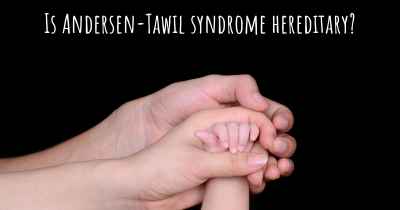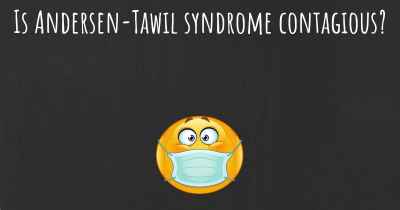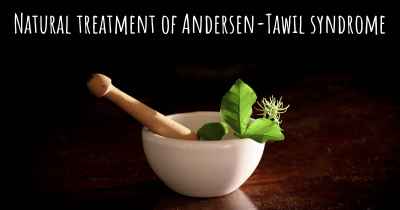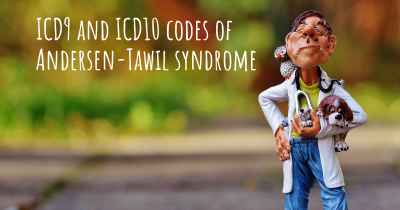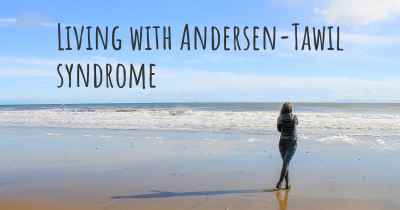Is it advisable to do exercise when affected by Andersen-Tawil syndrome? Which activities would you suggest and how intense should they be?
See if it is advisable for people with Andersen-Tawil syndrome to practice sports and which ones are the most recommended if you have Andersen-Tawil syndrome
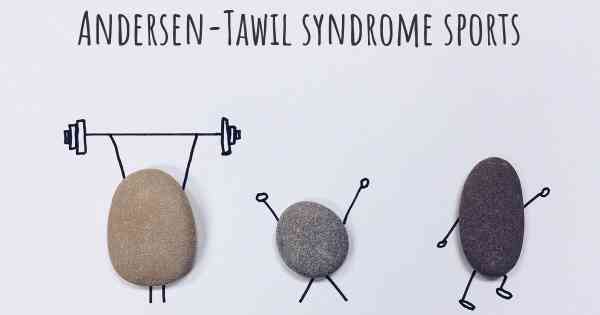
Andersen-Tawil syndrome (ATS) is a rare genetic disorder that affects the muscles and the heart. It is characterized by a triad of symptoms including periodic paralysis, cardiac arrhythmias, and distinctive physical features. Given the nature of this condition, it is important to approach exercise with caution and seek guidance from a healthcare professional.
While exercise can have numerous benefits for overall health and well-being, individuals with ATS may need to modify their exercise routine to accommodate their specific needs and limitations. The intensity and type of exercise should be determined on a case-by-case basis, taking into consideration the individual's overall health, symptoms, and any potential cardiac risks.
Low-impact exercises are generally recommended for individuals with ATS as they are less likely to trigger muscle weakness or cardiac symptoms. These exercises are gentle on the joints and muscles, reducing the risk of injury. Some suitable low-impact exercises include:
- Walking: Walking is a great low-impact exercise that can be easily tailored to an individual's fitness level. It helps improve cardiovascular health and can be done at a pace that is comfortable for the person.
- Swimming: Swimming is an excellent choice as it provides a full-body workout without putting excessive strain on the muscles and joints. It is also a great way to improve cardiovascular fitness.
- Cycling: Cycling, whether on a stationary bike or outdoors, is a low-impact exercise that can be adjusted to suit the individual's fitness level. It helps strengthen the leg muscles and improve cardiovascular endurance.
- Yoga: Yoga focuses on gentle stretching, flexibility, and relaxation. It can help improve muscle tone, balance, and overall well-being. However, certain poses may need to be modified or avoided depending on the individual's specific symptoms.
Exercise intensity should be carefully monitored for individuals with ATS. It is important to avoid overexertion, as it can potentially trigger muscle weakness or cardiac arrhythmias. The exercise intensity should be tailored to the individual's fitness level and symptoms. It is advisable to start with shorter durations and lower intensities, gradually increasing as tolerated.
Regular monitoring of heart rate and blood pressure during exercise is crucial for individuals with ATS. This can help identify any abnormal responses and guide adjustments to the exercise routine. It is recommended to work closely with a healthcare professional or a qualified exercise specialist who can provide guidance and supervision.
Precautions should be taken to ensure safety during exercise for individuals with ATS:
- Stay hydrated: Drink plenty of water before, during, and after exercise to prevent dehydration.
- Warm-up and cool-down: Always start with a gentle warm-up and end with a cool-down to prepare the muscles and prevent injury.
- Listen to your body: Pay attention to any signs of fatigue, weakness, or discomfort. If symptoms worsen during exercise, it is important to stop and rest.
- Avoid extreme temperatures: Extreme heat or cold can potentially trigger symptoms in individuals with ATS. It is advisable to exercise in a comfortable environment.
- Communicate with healthcare professionals: Regularly update your healthcare team about your exercise routine and any changes in symptoms.
In conclusion, exercise can be beneficial for individuals with Andersen-Tawil syndrome, but it should be approached with caution and tailored to the individual's specific needs. Low-impact exercises such as walking, swimming, cycling, and yoga are generally recommended. Exercise intensity should be monitored and gradually increased as tolerated. Regular monitoring of heart rate and blood pressure is important, and precautions should be taken to ensure safety during exercise. It is crucial to consult with healthcare professionals for personalized guidance and supervision.


